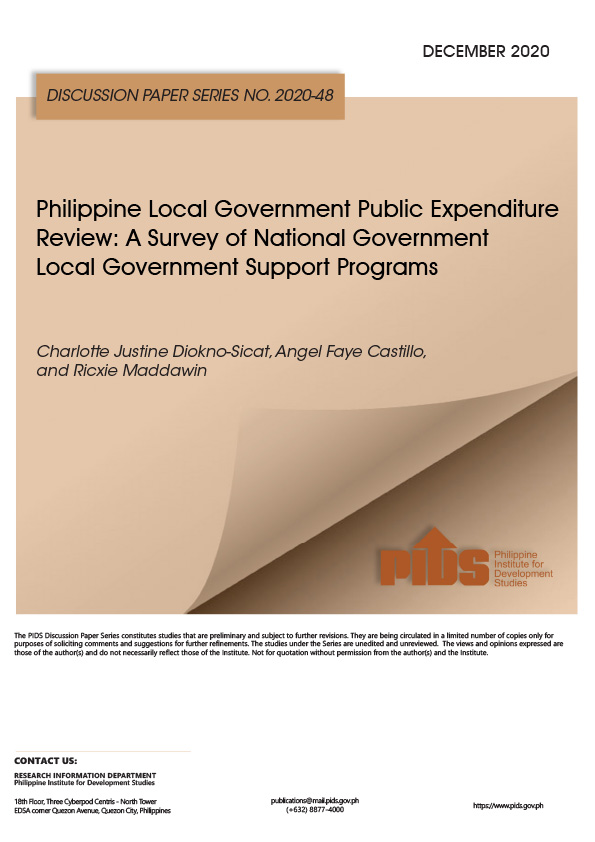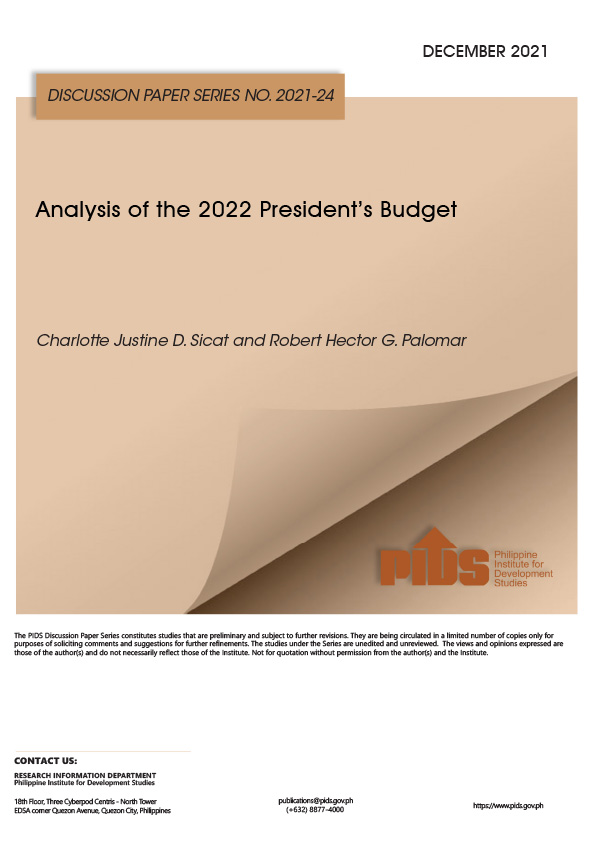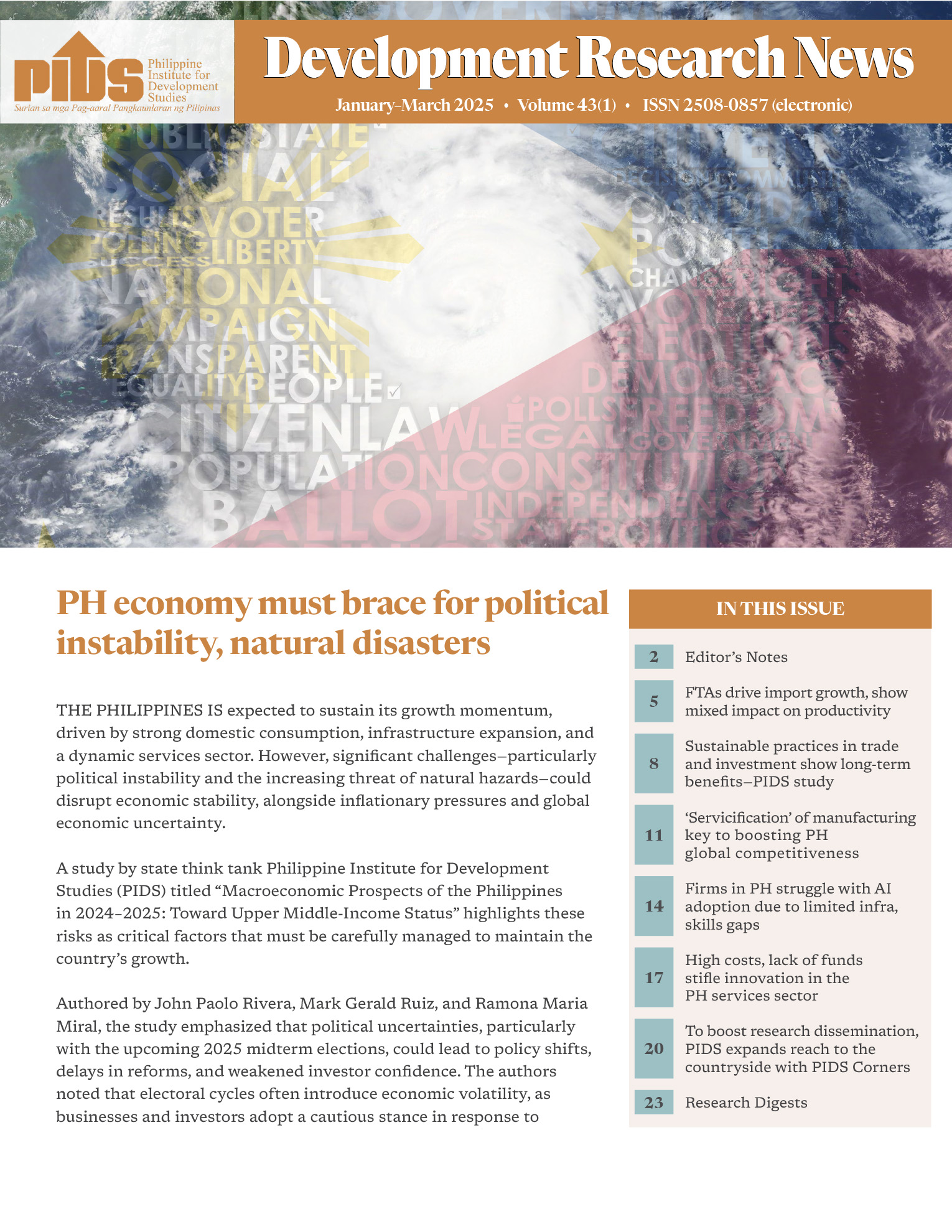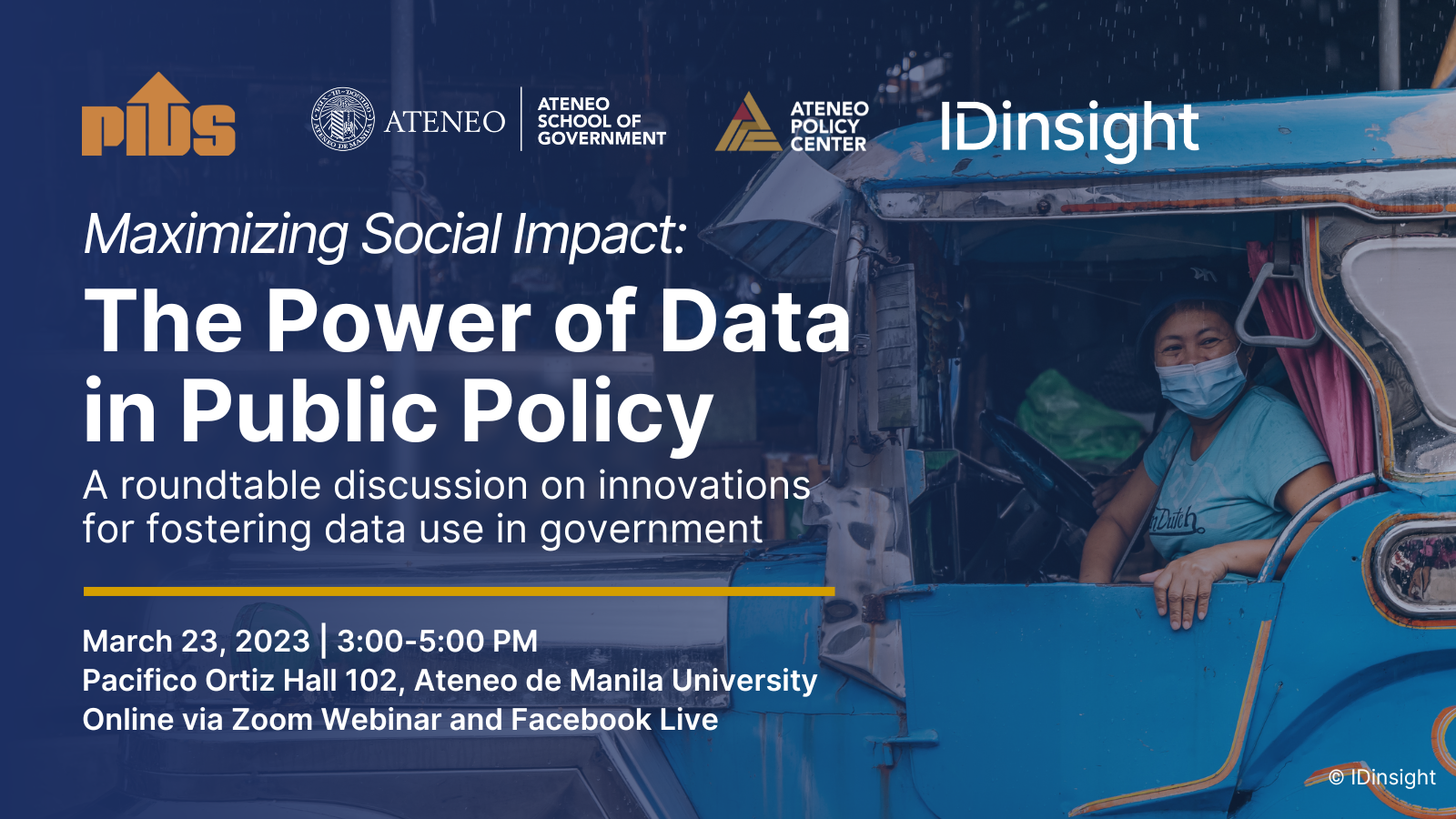Philippine local governments were given increased autonomy, revenue-raising and expenditure responsibilities under the Local Government Code of 1991 (LGC). At the same time, the LGC instituted the intergovernmental fiscal transfer called the internal revenue allotment (IRA) to help to help local governments fulfill their mandates recognizing fiscal imbalance in devolved functions. Apart from this, national government provides additional assistance to local governments through programs lodged in different agencies that are meant for devolved infrastructure services. This study examines these national government programs, evolution and expenditure trends and surveys the literature of assessments of these programs.
In the past decade, the three programs that received the largest budgetary allocations, are the Department of Public Works and Highways’ Local Infrastructure Program, Department of Agriculture’s Farm to Market Road programs and the Department of the Interior and Local Government’s Financial Subsidy to Local Government Units (LGUs).
These national government programs have almost 100% budget utilization rates compared to lower utilization rates of local development funds (which are the primary source of infrastructure investments of LGUs). This, combined with the evidence of low uptake of assistance programs by poorer LGUs, offer two clear considerations for policymakers in strengthening local government oversight especially if the assistance programs will be discontinued. First, ensure that local governments will spend on infrastructure, i.e. at the very least spend the mandated local development fund. Infrastructure spending has the largest impact on incomes and in jumpstarting the economy and the path to growth would be arduous if this slows down as a result of insufficient local government investments absent national government programs. Second, if policymakers decide to maintain a more targeted assistance program, its objective, criteria and monitoring and evaluating plan should be clear. It should be complementary and aligned with the assistance programs of the Seal of Good Local Governance and Community-Based Monitoring System Laws to be efficient in the use of public funds. The goal moving in recovering from COVID coupled with the implementation of the Mandanas ruling is how to protect the vulnerable with social safety nets but also ensure that local governments contribute to economic recovery, of which infrastructure spending brings the largest multiplier effect.
Comments to this paper are welcome within 60 days from date of posting.
Email publications@mail.pids.gov.ph.













